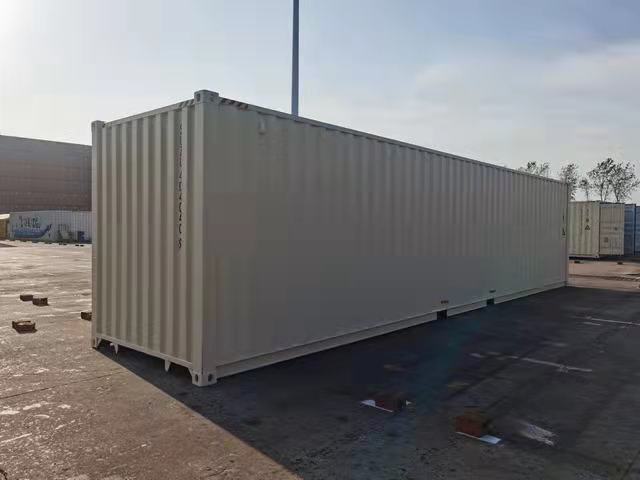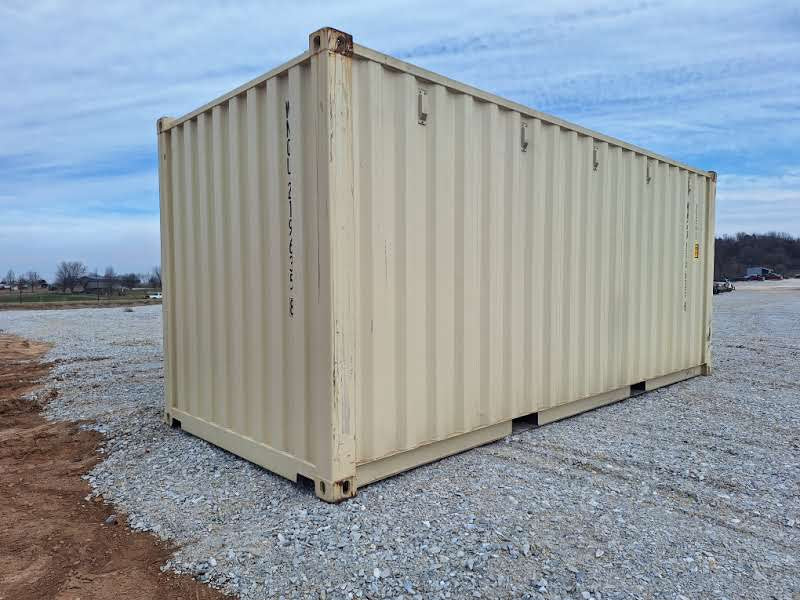The Ultimate Overview to Choosing the Right Delivery Container for Your Needs
When it pertains to picking the best delivery container, understanding your certain needs is crucial. You'll wish to take right into account elements like dimension, type, and product to assure you make the most effective selection. From basic dimensions to specialized choices, there's a lot to check out. And also, budgeting for both the container and any adjustments can make a large distinction. Let's break down the crucial facets to help you discover the best suitable for your needs.
Understanding Shipping Container Sizes
When you're choosing a shipping container, recognizing the numerous sizes available is vital for making the appropriate decision. Shipping containers normally can be found in standard lengths of 20 and 40 feet, but you'll also discover various other measurements. Recognizing the dimension you need depends upon what you prepare to store or transport.If you're moving smaller products, a 20-foot container could be excellent, while bigger shipments typically need a 40-foot container. The elevation can also differ; high cube containers supply added vertical room, which can be useful for taller goods.Before determining, measure your cargo, and consider just how much space you'll need for loading and discharging. Constantly factor in potential future needs-- going with a slightly larger container might save you inconvenience down the line. Inevitably, selecting the ideal dimension will certainly improve efficiency and assure your items are safe and secure throughout transit
Kinds of Delivery Containers Available
There are a number of sorts of delivery containers available, each created for details objectives and cargo needs. The standard dry container is flexible, best for basic cargo. If you're shipping disposable products, take into consideration a refrigerated container, which preserves a controlled temperature. For large items, high cube containers use extra elevation, suiting taller loads.If you require to transport heavy machinery or tools, level shelf containers provide a strong base without wall surfaces. Open-top containers allow for very easy loading of tall cargo, with a removable tarp covering for protection. If you're trying to find flexibility, take into consideration a collapsible container that can be quickly kept when not in use.Lastly, specialized containers like container containers are used for liquids, while vented containers are designed for bulk cargo that needs air flow. Understanding your freight type will certainly aid you choose the right container to satisfy your delivery requires successfully.
Material Factors To Consider for Toughness
When selecting a shipping container, the product plays an essential role in its sturdiness. You'll wish to weigh the benefits of steel versus light weight aluminum, particularly regarding rust resistance. Understanding these elements can aid you make an extra enlightened selection for your delivery requires.
Steel vs. Light weight aluminum Containers
How do you select in between steel and light weight aluminum containers for your shipping needs? Begin by taking into consideration sturdiness. Steel containers are durable and deal outstanding toughness, making them excellent for heavy loads and rough problems. They withstand damage from impacts and are often cheaper, which can be a significant factor for budget-conscious buyers.On the other hand, light weight aluminum containers are lightweight, which can conserve you on delivery expenses. They're much easier to steer and are a wonderful selection if you need to carry goods often. Light weight aluminum is generally a lot more costly and much less durable than steel. Weigh your particular demands meticulously, including weight, price, and the kind of freight you'll be delivery, to make the appropriate selection for your scenario.
Rust Resistance Factors
Choosing the best material doesn't just entail weight and expense; rust resistance plays a significant function in toughness. When choosing a delivery container, take into consideration the environment it'll deal with. Steel containers, while solid, can rust if not properly treated. Seek alternatives with protective finishes or galvanization to improve their lifespan. Light weight aluminum, on the various other hand, uses natural corrosion resistance, making it suitable for seaside locations or humid problems. It can be much more expensive. Additionally, analyze the container's usage-- if it'll be subjected to chemicals or rough climate, focus on materials that can endure these conditions. Spending in a corrosion-resistant container now can save you from pricey repair services or substitutes down the line. Select carefully for lasting advantages.
Adjustments and Modification Options
Delivering containers aren't just for transporting products; they can be transformed to fulfill your details demands with numerous modifications and customization choices. You can transform a typical container right into a cozy workplace room, a momentary retail shop, or also a personal health club. The opportunities are nearly endless.Think concerning adding home windows, insulation, or air flow to improve comfort. You could also take into consideration electrical circuitry, plumbing, or perhaps custom shelving to improve performance. If safety's a worry, strengthened locks can give peace of mind.For visual charm, you can paint the container or add an unique design to make it attract attention. Do not ignore floor covering choices-- whether you want resilient plywood or something a lot more innovative, it can boost the my review here space.Ultimately, tailoring your shipping container to fit your demands can boost usability and produce a special setting that mirrors your style.
Assessing Your Transport Demands
When it concerns utilizing your modified delivery container, comprehending your transport needs is crucial. Start by identifying what you'll be shipping-- whether it's hefty tools, retail goods, or individual things. Each type of cargo has different needs regarding size, weight, and accessibility.Next, think about the range and mode of transport. Are you shipping in your area, across the country, or worldwide? This impacts the container's design and performance. If you're using vehicles, ensure your container fits basic measurements for very easy loading and unloading.Additionally, consider transit conditions. Will your items need unique protection from climate or temperature level variations? If so, you might require insulation or air flow attributes in your container.Lastly, evaluate just how commonly you'll be delivering items. Frequent shipments may require a more resilient and functional container to satisfy ongoing demands. By dealing with these factors, you'll be well-prepared to choose the ideal delivery container for your requirements.
Budgeting for Your Shipping Container
Setting a budget plan for your delivery container is essential for making sure a smooth buying process. First, figure out how much you can manage to spend. Remember that costs can vary substantially based on size, problem, and kind. New containers typically set you back extra, yet utilized ones can use significant savings.Next, take into consideration any kind of additional costs you may sustain, such as transport fees, delivery charges, and adjustments. If you prepare to personalize the container, consider those expenses also. Study various suppliers to contrast prices and locate the most effective bargain that fulfills your needs.Don' t fail to remember to include any type of permits or policies that might relate to your acquisition and usage of the container. By clearly outlining your spending plan, you'll be much better prepared to make educated decisions, ensuring you obtain the best container without breaking the bank.
Upkeep and Care for Longevity
To guarantee your shipping container lasts for years, normal maintenance is crucial. Begin by evaluating the outside for rust, dents, and damages. If you identify any type of concerns, address them promptly to stop additional deterioration. Clean read here the container occasionally, both within and out, to eliminate dust, particles, and moisture that can result in corrosion.Ensure the doors secure appropriately and oil the hinges to avoid corrosion and sticking. If you're making use of the container for storage space, think about including ventilation to lower moisture and mold development. For extra security, use a rust-inhibiting paint or sealant annually.If your container's situated in an extreme environment, like seaside locations, you may require to raise upkeep regularity. Maintain an eye on the floor covering, also; any type of indicators of wear ought to be repaired right away. With these straightforward i was reading this actions, you'll expand the life of your delivery container significantly.
Often Asked Questions
Exactly how Do I Locate a Reliable Shipping Container Supplier?
To locate a reliable shipping container vendor, beginning by looking into on-line testimonials, requesting recommendations from friends or market calls, and contrasting costs. Constantly inspect their credentials and warranty they provide quality containers that meet your demands.

Can I Lease a Shipping Container Instead of Purchasing?
Yes, you can certainly rent a shipping container as opposed to getting one. Numerous distributors supply rental choices, which can conserve you money and give versatility if you just need it for a short period.
What Allows Are Required for Container Positioning?

Are Delivery Containers Weatherproof and Appropriate for Outdoor Storage?
Yes, shipping containers are typically weatherproof, created to stand up to rough conditions. Their durable construction maintains your products protected and completely dry, making them ideal for outside storage space. Simply assure correct air flow to avoid wetness accumulation inside.
Just how Do I Carry a Delivery Container Once Purchased?
